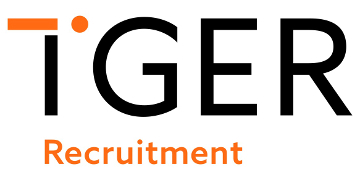CIPD research in 2024 found that 42% of employers had taken steps to improve retention, focusing their efforts on drivers of attrition such as wellbeing, pay and work/life balance.
Adopting a blanket approach is not enough to keep valued employees, so here are a few ways in which HR teams can lean on AI to personalise their talent retention strategy.
Match employees to adjacent career paths
Understanding an employee's career aspirations is a crucial part of a retention strategy, particularly for hard-to-recruit roles. Performance appraisals, completed learning and certifications, and pulse survey responses give insight into individual employee career development goals.
Read more: Five ways to recharge your retention strategy
But most organisations don’t use this information to guide employees (and their line managers) on adjacent career paths where they have transferable skills, it’s too time-consuming. Not paying attention to employees’ career goals could mean they seek alternative options elsewhere.
Here, an AI-driven internal talent marketplace platform could help; firstly, by supporting talent growth through helping employees discover and assess their readiness for various opportunities across the organisation, and secondly, in helping line managers identify and assess their talent pipeline for upcoming vacancies.
Insights from the platform enable HR teams to support the organisation with workforce planning more strategically. It also frees up time for HR teams to do more human things like talking with line managers and employees who need extra support.
Read more: HR teams among biggest AI champions at work, research finds
But an AI-driven internal talent marketplace platform is not a silver bullet for every organisation. It’s particularly useful for large organisations where employees regularly change jobs, have skills that become outdated quickly, or have skills that are quite easy to define and measure. For other organisations, it might be easier (and cheaper) to map career paths by job families manually and share with employees.
Reward employees who lean on AI for meaningful work
One of the often-celebrated benefits of introducing AI at work is the potential for it to take on more time-consuming, repetitive or manual tasks – the tasks that employees sometimes would rather not do. It can help free up more time for employees to focus on more strategic and creative aspects of their work or upskill in other areas, as well as increase business productivity.
However, filling this free time with higher value, challenging tasks could also be a recipe for attrition and burnout if employees can’t cope. This is where organisations should work with employees to ensure they are adopting AI in ways that don’t disadvantage or disengage them.
Read more: AI will help HR break free from its admin legacy
Taking a collaborative approach to AI adoption that mutually benefits the organisation and workers could be a useful way to retain your most resourceful employees. Rewards could be paid time to upskill and train colleagues, explore a new business opportunity, or even time off to volunteer or simply rest. It doesn’t always have to be a cash bonus.
AI-driven tools can help organisations personalise and optimise an organisation’s retention strategy, helping to anticipate and mitigate the reasons for employee turnover. By using AI to match employees to career paths that interest them, and encouraging staff to use AI as a tool to facilitate more meaningful and engaging work, HR teams can foster an exciting and engaging environment where valued employees will want to stay for the long term.
Hayfa Mohdzaini is senior policy and practice adviser for technology at the CIPD











